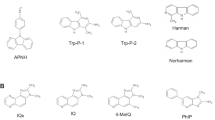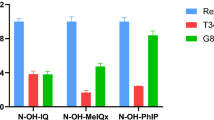Abstract
Glutathione transferase (GST) GSTT1-1 is involved in the biotransformation of several chemicals widely used in industry, such as butadiene and dichloro methane DCM. The polymorphic hGSTT1-1 may well play a role in the development of kidney tumours after high and long-term occupational exposure against trichloroethylene. Although several studies have investigated the association of this polymorphism with malignant diseases little is known about its enzyme activity in potential extrahepatic target tissues. The known theta-specific substrates methyl chloride (MC) dichloromethane and 1,2-epoxy-3-(p-nitrophenoxy)propane (EPNP) were used to assay GSTT1-1 activity in liver and kidney of rats, mice, hamsters and humans differentiating the three phenotypes (non-conjugators, low conjugators, high conjugators) seen in humans. In addition GSTT1-1 activity towards MC and DCM was determined in human erythrocytes. No GSTT1-1 activity was found in any tissue of non-conjugators (NC). In all organs high conjugators (HC) showed twofold higher activity towards MC and DCM than low conjugators (LC). The activity in human samples towards EPNP was too close to the detection limit to differentiate between the three conjugator phenotypes. GSTT1-1 activity towards MC was two to seven-times higher in liver cytosol than in kidney cytosol. The relation for MC between species was identical in both organs: mouse > HC > rat > LC > hamster > NC. In rats, mice and hamsters GSTT1-1 activity in liver cytosol towards DCM was also two to seven-times higher than in the kidney cytosol. In humans this activity was twice as high in kidney cytosol than in liver cytosol. The relation␣between species was mouse > rat > HC > LC > hamster > NC for liver, but mouse > HC > LC/ rat > hamster/NC for kidney cytosol. The importance to heed the specific environment at potential target sites in risk assessment is emphasized by these results.
Similar content being viewed by others
Author information
Authors and Affiliations
Additional information
Received: 16 July 1998 / Accepted: 4 August 1998
Rights and permissions
About this article
Cite this article
Thier, R., Wiebel, F., Hinkel, A. et al. Species differences in the glutathione transferase GSTT1-1 activity towards the model substrates methyl chloride and dichloromethane in liver and kidney. Arch Toxicol 72, 622–629 (1998). https://doi.org/10.1007/s002040050552
Issue Date:
DOI: https://doi.org/10.1007/s002040050552




